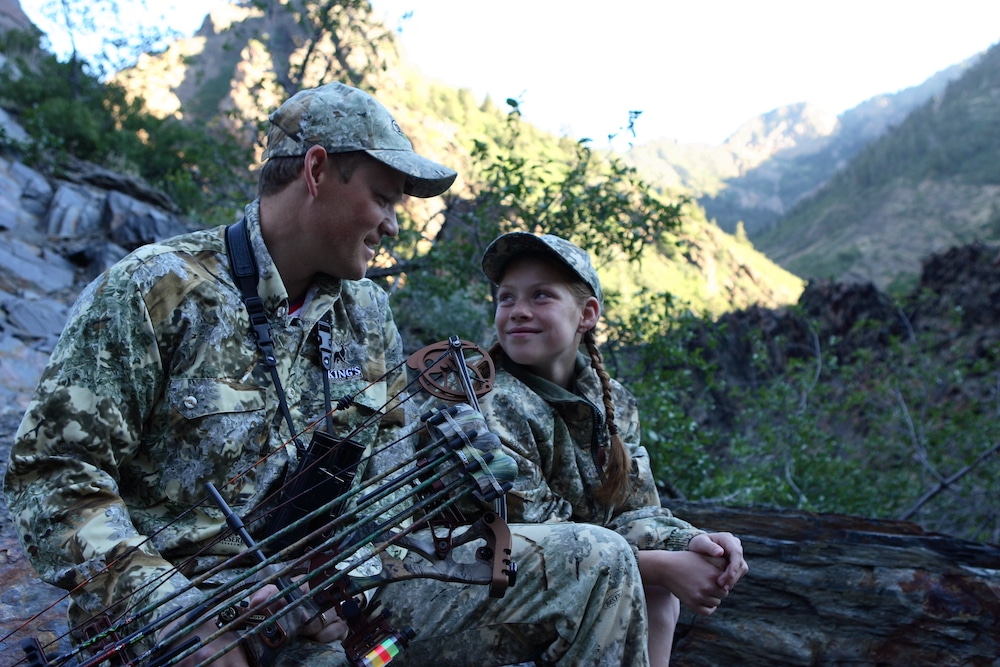“Would you like for us to videotape your bow hunt in the morning?” asked TV personality Jimmy Houston. I was hunting with El Halcoun Outfitters in Mexico for Gould’s turkeys and Houston happened to be in camp. I hunted from a blind the next morning while the camera operator sat outside. My guide called a big tom close to the blind when it suddenly acted spooky. I had to shoot through a tiny opening at an awkward angle and missed the gobbler at eight yards. For the rest of the morning, I was hazed repeatedly, “How close was that turkey?” “Would five yards be good enough?” On, and on!
An arrow to the base of the neck is an instant kill.
In the early afternoon, I went back to my blind while the rest of the group hunted with shotguns. In the late afternoon, I saw two hens pass by in the same spot about 100 yards away. Believing that a gobbler might follow, I bailed on the blind and stood in some thick cover with a small shooting window. Within minutes, I saw a huge gobbler walking along the same route. I raised my bow and when the tom stepped into my window, pucked with a mouth call and the bird raised its head. Aiming at its neck, the arrow dispatched the gobbler immediately. When Houston and his buddies returned empty-handed to the blind, I hoisted the monster turkey and made them pose for a picture with me. Oh, the sweet revenge.
Mobile hunting works, even in open hardwoods.
Abandon the Blind
Maryland has a two-bird limit on spring gobblers and I can usually take one bird from a blind on the small farm I hunt. Unfortunately, after the first week of the season, birds become pressured and don’t enter fields as readily. If toms won’t come to you, go to them. In the picture above, I moved from my blind in the late morning and slipped quietly into a wooded area where turkeys often feed. I posted a jake decoy at 10 yards and then sat at the base of a small tree, as the area had been timbered. After calling several times, I saw two gobblers approaching and raising my crossbow. The birds got about five yards from the decoy and became suspicious, alarm pucked, and began walking away. I aimed at the center of the back and the right gobbler died instantly.
Once gobblers become educated by hunters, you may need to change tactics.
Un-callable Gobblers
Hunting from a blind offers scouting and intelligence that can lead to future success even if pressured turkeys avoid your setup. The biggest bird on the farm held back on opening day and I managed to arrow his buddy. In succeeding days, the big tom skirted the field I hunted but passed through a small opening 50 yards inside of the woodline. As the season progressed, vegetation grew so I placed a single alert hen decoy in the small opening and sat in a patch of honeysuckle 25 yards away. As usual, I heard the tom gobble deep in the woods and called sparingly to entice it. The old bird took more than an hour to travel 100 yards, but a peek at the decoy in the tall grass closed the deal.
By late morning most gobblers have bred nearby hens and become easier to call.
Late Can be Great
Many turkey enthusiasts hunt before work which can lead to crowded conditions early in the morning. However, as the day progresses, they head to work or become discouraged by a lack of success. Mid-to-late morning is an ideal time to hunt, especially if you are an archer and have the patience to succeed. Calling to a gobbling and strutting turkey is every hunter’s dream, but many toms will walk in silently. If you are covering the woods, make sure that you stay in position for at least 30 minutes. Choose a large tree to sit against and post a decoy at 20 yards where you have visibility for safety. Naps are acceptable and sometimes seem to attract turkeys. Blind tactics should be your go-to method for success, but like every hunting situation, it’s great to have a plan B.


























